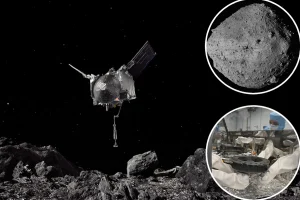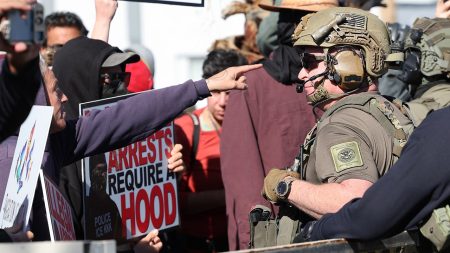Russia’s Bold Airspace Incursion: Estonia Condemns “Unprecedentedly Brazen” Border Violation
Diplomatic Tensions Escalate as Russian Aircraft Breach NATO Territory for Extended Period
In a significant escalation of regional tensions, Estonia’s foreign ministry has formally condemned what it described as an “unprecedentedly brazen” violation of its sovereign airspace by Russian military aircraft. The incident, which saw Russian planes entering Estonian territory for an extraordinarily long 12 minutes, has triggered alarm bells across NATO and renewed concerns about Moscow’s increasingly assertive posture along the alliance’s eastern flank.
The airspace violation occurred over the Baltic Sea near Estonia’s Vaindloo Island, according to official statements from Tallinn. Estonian Foreign Minister Margus Tsahkna didn’t mince words when addressing the incident, characterizing it as deliberate provocation rather than navigational error. “This wasn’t a momentary transgression that could be attributed to technical malfunction or pilot error,” Tsahkna stated during an emergency press briefing. “The duration of the incursion—a full 12 minutes—clearly indicates a calculated action designed to test NATO’s response mechanisms and our sovereignty.” The incident marks one of the longest documented airspace violations in recent Baltic history, significantly exceeding the typical patterns of brief, seconds-long transgressions that occasionally occur in contested border regions.
Historical Context and Pattern of Provocations
This latest incident doesn’t exist in isolation but rather fits into a broader pattern of aerial confrontations that have intensified since Russia’s full-scale invasion of Ukraine began in February 2022. The Baltic states—Estonia, Latvia, and Lithuania—have reported a marked increase in what NATO terms “near-space violations” and aggressive flight patterns by Russian military aircraft. Defense analyst Katerina Vonderheim from the Baltic Security Initiative explains the strategic context: “These aren’t random events. They form part of Russia’s hybrid warfare toolkit aimed at projecting power, gathering intelligence, and most importantly, creating a sense of psychological pressure on neighboring states.” Historical data reveals a troubling trajectory, with documented incidents increasing nearly 40% year-over-year across the Baltic region.
What differentiates this particular violation is not merely its duration but its apparent deliberateness. NATO’s Baltic Air Policing mission, which provides round-the-clock surveillance of the region’s airspace, tracked the Russian aircraft throughout the incursion. Alliance sources, speaking on condition of anonymity, confirmed that Russian pilots acknowledged radio communications but disregarded multiple warnings to exit Estonian airspace. “When an aircraft briefly crosses a border due to navigational issues, pilots typically respond immediately to correct their course,” explained retired Air Force Commander General Karl Heinonen. “The fact that these aircraft remained in violation for 12 minutes while ignoring standard protocols points to a deliberate decision rather than an accident.”
Diplomatic Fallout and Estonia’s Response
The Estonian government’s response has been swift and multi-faceted. Within hours of the incident, the Russian ambassador was summoned to the Foreign Ministry in Tallinn, where he was presented with formal diplomatic protest notes and evidence of the violation. “We delivered an unambiguous message that such provocations are completely unacceptable and dangerous,” said Ministry spokesperson Helena Pärn. Simultaneously, Estonia activated NATO’s Article 4 consultation mechanism, which allows member states to bring security concerns before the North Atlantic Council when they feel their territorial integrity or security is threatened.
The incident has generated remarkable political unity within Estonia’s typically divided parliament. Opposition leader Mart Helme, normally critical of the government, stood shoulder-to-shoulder with Prime Minister Kaja Kallas in condemning the violation. “When it comes to territorial sovereignty, there are no political divisions among Estonians,” Helme declared during a joint press appearance. “This incident reminds us why NATO membership remains our fundamental security guarantee.” The country has also announced plans to accelerate its defense modernization program, with particular emphasis on enhancing air surveillance capabilities and early warning systems along its eastern border. Defense Minister Hanno Pevkur confirmed that an additional €24 million would be allocated for border security technologies in the upcoming budget cycle.
International Reactions and NATO’s Strategic Dilemma
The international response has been supportive but measured, reflecting the delicate balance NATO must strike between showing solidarity with its easternmost members while avoiding undue escalation with nuclear-armed Russia. NATO Secretary General Jens Stoltenberg called the incident “serious and reckless,” while reiterating the alliance’s “ironclad commitment” to Estonian security. The United States, United Kingdom, and France issued coordinated statements condemning the violation, with Washington emphasizing that “NATO territory is inviolable, and the alliance stands ready to defend every inch of it.”
Behind closed doors, however, security experts acknowledge the strategic dilemma posed by such provocations. “Russia is engaged in a calculated strategy of testing boundaries and NATO’s resolve,” said Dr. Marta Kepe, senior defense researcher at the RAND Corporation. “The alliance must respond firmly enough to demonstrate deterrence, yet carefully enough to prevent inadvertent escalation into a broader conflict.” This balancing act is particularly challenging in the current geopolitical context, with Russia already engaged in Europe’s largest land war since 1945 in neighboring Ukraine. The violation has prompted discussions within NATO about potentially strengthening the Baltic Air Policing mission, which currently relies on rotational deployments from various member states. Several allies, including France and Germany, have signaled willingness to contribute additional fighter aircraft to the mission in response to the incident.
Strategic Implications and Future Outlook
Security analysts view this airspace violation through the lens of Russia’s broader strategic objectives in the region. “Moscow is sending multiple messages simultaneously,” explains Professor Thomas Forsberg from the University of Helsinki’s Center for European Studies. “To the Baltic states, it’s a reminder of their geographic vulnerability. To NATO, it’s a test of alliance cohesion and response capabilities. And to domestic Russian audiences, it’s a demonstration that Russia remains powerful enough to challenge Western security structures despite setbacks in Ukraine.”
The long-term implications remain concerning for European security. Estonia, along with Latvia and Lithuania, represents what strategists term a potential “flash point”—a geographic vulnerability within NATO territory that Russia could theoretically exploit in a future conflict scenario. While a direct military confrontation remains unlikely, incidents like this extended airspace violation contribute to a climate of uncertainty and tension that carries its own strategic and economic costs. As Estonian Prime Minister Kaja Kallas noted in her address to the nation following the incident: “Our security environment has fundamentally changed. We must accept that provocations of this nature represent not a temporary crisis but a new normal that requires sustained vigilance, investment, and resolve.” As NATO prepares for its upcoming Defense Ministers meeting in Brussels, the Estonian airspace violation will undoubtedly feature prominently on the agenda, potentially accelerating the alliance’s ongoing adaptation to what many now describe as a new era of confrontation with Russia—one characterized less by the risk of immediate full-scale conflict than by persistent, calculated provocations designed to test Western unity and resolve.










